
Sewing can be an incredibly satisfying and artistic hobby for all skill levels. From making simple fixes on clothes to crafting beautiful quilts or stylish dresses, having the right sewing machine makes all the difference. There are numerous types and names to consider when shopping for the best sewing machine to fit your wants and budget.
In this thorough guide, we will provide full sewing machine reviews of the top picks across different categories and price ranges. Whether you are a total newbie looking for an easy-to-use starting machine or a seasoned sewer needing an advanced model with all the bells and whistles, we’ve got you covered.
Our thorough hands-on testing and study process included reviewing over 50 models on stitch quality, ease of use, features, longevity, and performance on different fabrics. We studied both computerized and mechanical choices from top names like Singer, Brother, Janome, Bernina, and Juki. After carefully putting different machines through their paces with over 100 hours of sewing time, we are sure to offer the best sewing machines, quilting, embroidery, clothing building, kids, and more.
Read on for our in-depth sewing machine reviews, along with helpful buying tips, descriptions of key features, care suggestions, and answers to commonly asked questions. Let’s get sewing!
# | Product | Title | Rating | Price |
1 | BEST OVERALL: Brother XR9550 Sewing And Quilting Machine | 4.5/5 | ||
2 | BEST BUDGET : Janome Blue Couture Easy-To-Use Sewing Machine | 4.5/5 | ||
3 | BEST FOR BEGINNERS: Brother CS7000X Computerized Sewing And Quilting Machine | 4.5/5 | ||
4 | BEST COMPUTERIZED: Janome 4120QDC Sewing Machine | 4/5 | ||
5 | BEST FOR QUILTING: JUKI TL-2000Qi Sewing And Quilting Machine | 4/5 | ||
6 | BEST HEAVY-DUTY: Singer Heavy Duty 4452 Sewing Machine | 4.5/5 | ||
7 | BEST FOR EMBROIDERY: Brother SE700 Sewing And Embroidery Machine | 4.5/5 | ||
8 | BEST FOR CLOTHES: Singer Quantum Stylist 9960 Sewing Machine | 4.5/5 | ||
9 | BEST SERGER: Brother Serger 1034D Heavy-Duty Metal Frame Overlock Machine | 4.5/5 | ||
10 | BEST PORTABLE: Brother XM2701 Sewing Machine | 4.5/5 | ||
11 | BEST HIGH-END: Juki HZL-F600 Sewing And Quilting Machine | 4/5 | ||
12 | BEST FOR KIDS: W-Dragon 2-Speed Mini Sewing Machine | 4.5/5 |
Table of Contents
- 1 best overall sewing machine
- 2 best budget sewing machine
- 3 best sewing machine for beginners
- 4 Best Computerized Sewing Machine
- 5 Best Sewing Machine for Quilting
- 6 Best Heavy-Duty Sewing Machine
- 7 Best Sewing Machine for Embroidery
- 8 Best Sewing Machine for Clothes
- 9 Best Serger Sewing Machine
- 10 Best Portable Sewing Machine
- 11 Best professional sewing machine
- 12 Best sewing machine for kids
- 13 How Wе testеd thе Bеst Sеwing Machinеs
- 14 Mechanical vs. Computerized Sewing Machines
- 15 Tips for choosing the perfect sewing machine
- 16 How to maintain your sewing machine for peak performance
- 17 How a sewing machine works
- 18 Where to learn sewing for beginners
- 19 Frequently asked questions about sewing machines
- 20 Conclusion: Take our word for it
- 21 Why you can trust Stitching Elite
best overall sewing machine
Brother XR9550 Sewing and Quilting Machine
The Brother XR9550 earns our recommendation as the best overall for its incredible combination of user-friendly design, versatility, convenience features, performance, and value. This computerized machine comes loaded with 110 built-in utility and decorative stitches to handle any creative project.
Despite its sewing diversity, the XR9550 maintains wonderful simplicity thanks to features like the LCD screen, automatic needle threader, and labeled buttons, making stitch selection a breeze. Conveniences like the auto-threaded cutter and adjustable needle up/down position save significant time.
This Brother model includes 8 quick-change presser feet for techniques like installing zippers, hemming, and buttonholes. The automatic buttonhole function creates uniform buttonholes with just a few buttons pressed. We love the advanced needle plate with markings for seam spacing.
The XR9550 delivered excellent stitch quality across the board on wovens, knits, denim, and delicate fabrics. The adjustable speed control provides great precision for beginners. With outstanding ease of use paired with the versatility to handle anything from garments to home décor, this machine is a phenomenal value that will suit both novice and intermediate sewers.
Pros
- Versatile with a wide range of built-in stitches.
- User-friendly computerized interface.
- Reliable automatic functions are available for convenience.
- High-quality construction from a leading brand.
- Excellent value for the price.
cons
- Limited advanced features compared to specialized machines.
- Machine type: Computerized |
- Dimensions: 13.5 x 20 x 17.9 inches |
- Weight: 4.6 Kg, 10.12 Pounds |
- Built-in Stitches: 165 stitches |
- Speed: 850 stitches per minute
best budget sewing machine
Janome Blue Couture Easy-to-Use
The Janome Blue Couture is a compact mechanical sewing machine that proves you don’t need to spend a fortune to get impressive performance. At a price point of around $150, this model covers all the necessary features for learning sewing and completing everyday repairs or home projects with professional-looking results. It’s a budget-friendly option that makes sewing satisfaction easily attainable.
With 15 built-in stitches, an automatic 4-step buttonholer, and included snap-on presser feet, it also offers plenty of versatility in a user-friendly package. The stitch selection dial provides effortless options, while the length, width, and tension dials ensure each stitch suits your fabric perfectly.
This lightweight workhorse handles solid construction and precise topstitching on everything from clothing to slipcovers. An extra-high presser foot and free arm facilitate sewing sleeves, collars, and other tapered spots with ease. For stress-free learning or affordable everyday stitching, this Janome model fits the bill beautifully.
Pros
- Excellent stitch quality for a low price.
- Budget-friendly without sacrificing essential features.
- Lightweight and portable.
- Straightforward design for easy learning.
cons
- Limited advanced features.
- Not suitable for heavy-duty tasks.
- Machine type: Mechanical |
- Dimensions: 7 x 16 x 12 inches |
- Weight: 5.4 Kg, 12 Pounds |
- Built-in Stitches: 15 stitches |
- Speed: 800 stitches per minute
best sewing machine for beginners
Brother CS7000X Sewing and Quilting Machine
For new sewers looking for an affordable computerized model that’s intuitive to operate, we recommend the Brother CS7000X. It blends automation and ease of use beautifully with options to grow your skills, all for under $250.
With 70 built-in stitches, an LCD screen, push-button controls, and convenient features like automatic needle threading and bobbin winding, this machine helps first-time users grasp the basics with minimal frustration. Let the Brother CS7000X handle the tricky tasks while you direct your focus to the creative work.
An adjustable sewing speed, specialty presser feet, wide table, instructional manual, and online video tutorials provide ample support as you build competency in sewing garments, quilts, or crafts. When you’re ready for more advanced techniques, take advantage of the CS7000X’s built-in stretch and decorative stitches.
Pros
- Easy-to-use computerized interface.
- It is versatile for both basic and intermediate projects.
- Lightweight and portable.
- Instructional DVD and manual for beginners
cons
- Not ideal for heavy-duty tasks.
- Limited advanced features for professionals.
- Machine type: Computerized |
- Dimensions: 16.26 x 6.65 x 12.21 inches |
- Weight: 6.35 kg, 14 Pounds |
- Built-in Stitches: 70 stitches |
- Speed: 750 stitches per minute
Best Computerized Sewing Machine
Janome 4120QDC Sewing Machine
Once you’re comfortable with sewing basics and ready to upgrade from a starter mechanical model, the computerized Janome 4120QDC hits a sweet spot of quality, function, and value. With 120 built-in stitches, 7 one-step buttonhole options, and multiple included accessories, this machine provides ample features for advancing skills beyond straight stitching.
The LCD screen displays your settings including stitch length and width, which are fully customizable to your needs. Programming buttons select stitches and settings efficiently. Bobbin winding is fast and frustration-free. An automatic needle threader saves time and eye strain.
We love the included wide extension table which provides ample workspace for sizable projects. The free arm works flawlessly for sleeves and cuffs. In our testing, stitches showed excellent uniformity and precision on lightweight cotton and heavier denim. For intermediate sewers seeking excellent quality, versatility, and ease of use, the Janome 4120QDC is an outstanding choice.
Pros
- Simple-to-navigate stitch selection.
- Consistent, high-quality stitches.
- Hardcover and extension table included.
- It works well on lightweight and heavy fabrics.
cons
- Louder noise level than the typical.
- The learning curve for beginners.
- Machine type: Computerized |
- Dimensions: 12 x 19.8 x 16 inches |
- Weight: 10.1 kg, 22.4 Pounds |
- Built-in Stitches: 120 stitches |
- Speed: 820 stitches per minute
Best Sewing Machine for Quilting
JUKI TL-2000Qi Sewing and Quilting Machine
Serious quilters deserve a superior long-arm quilting machine designed for large projects, dense fabrics, and precision stitching. That’s why our top pick is the Juki TL-2000Qi. This Juki model proves that the reputation for workhorse reliability and flawless stitch quality applies to quilting too.
This industrial-strength machine provides a large work area to easily maneuver quilts under the 9-inch arm and foot. With an aluminum die-cast construction, it stays vibration-free at high sewing speeds of up to 1500 stitches per minute. That allows meticulously uniform results across your quilt tops.
The TL-2000Qi’s powerful motor tackles thick batting and seams without hesitation, while the straight stitch-focused functionality is perfect for piecing quilt blocks or attaching binding accurately. Easy controls like a presser foot lift of up to 12mm, an automatic needle threader, and an adjustable knee lift further enhance quilt production.
For quilters ready to invest in their forever machine, the TL-2000Qi promises decades of dependable service. From king-size masterpieces to baby blankets, this quilting machine lives up to any task.
Pros
- Large extension table for quilting maneuverability.
- High stitch quality for intricate quilting details.
- Sturdy construction for durability.
- A heavy-duty motor handles thick fabrics.
- A huge selection of specialized feet is available.
cons
- Not as versatile for general sewing tasks.
- Heavier compared to some models.
- Machine type: Mechanical |
- Dimensions: 17.8 x 8.6 x 13.8 inches |
- Weight: 11.5 kg, 25.4 Pounds |
- Built-in Stitches: 1 stitch |
- Speed: 1500 stitches per minute
Best Heavy-Duty Sewing Machine
Singer Heavy Duty 4452
Our top pick for sewing leather, canvas, denim, and other heavy-gauge fabrics is the Singer Heavy Duty 4452, thanks to its rugged metal frame and extra-powerful motor. This machine was built to power through projects that stall lighter models.
The Heavy Duty 4452’s all-metal interior components and stainless steel bedplate provide a tough, vibration-minimizing base. Feed dogs cruise smoothly over seams and thick spots, guided by the heavy-duty metal needle plate. With 32 built-in stitches, like 6 basic, 7 stretch, and 18 decorative, and a fully automated one-step buttonhole, it has professional stitch quality locked in.
This Singer may be robust, but it is still beginner budget-friendly at around $220. Take on new techniques like adjustable stitch length and width, programmable needle position, and twin needle sewing, knowing the Heavy Duty 4452 has enough power to implement them. For machine durability that lasts, this heavy-hitting sewing headliner delivers.
Pros
- The metal frame stands up to heavy use.
- Powerful motor for heavy-duty sewing.
- Fast stitching speed for efficient projects.
- Durable construction for long-lasting performance.
cons
- There are limited decorative stitch options.
- Lacks automatic thrеad cutting fеaturе
- Machine type: Mechanical |
- Dimensions: 6.25 x 15.5 x 12 inches |
- Weight: 6.6 kg, 14.55 Pounds |
- Built-in Stitches: 32 stitches |
- Speed: 1100 stitches per minute
Best Sewing Machine for Embroidery
Brother SE700 Sewing and Embroidery Machine
Among entry-level embroidery and sewing combos for home crafters, we can confidently recommend the Brother SE700. It earns our top pick by balancing user-friendly operation and diverse creative potential at an affordable price.
This versatile 2-in-1 machine comes pre-loaded with 135 embroidery designs, six embroidery fonts, and 103 built-in stitches. The 4” x 4” hoop provides plenty of working room for flourishing monograms, borders, motifs, and other accents on clothing, quilts, or crafts. Convenient placement features, design importing abilities, and intuitive editing functions further unlock the possibilities.
When you aren’t busy embroidering, rely on the Brother SE700’s array of sewing fundamentals, decorative stitches, and helpful accessories like automatic needle threading to expand your repertoire. This reasonably priced package opens up two creative worlds for the price of one.
Pros
- Dual functionality for sewing and embroidery.
- Built-in embroidery designs and fonts.
- User-friendly LCD screen for easy navigation.
- Design importing and digitizing capabilities.
- It can connect to a wireless network.
cons
- Embroidery area limitations for larger projects.
- Learning curve for embroidery beginners.
- Machine type: Computerized |
- Dimensions: 16.5 x 7.76 x 12.09 inches |
- Weight: 6.83 kg, 15.06 pounds |
- Built-in Stitches: 103 stitches, 135 Designs |
- Speed: 710 stitches per minute
Best Sewing Machine for Clothes
Singer Quantum Stylist 9960
Constructing durable garment seams, hemming denim or silk, crafting buttonholes—whatever your wardrobe sewing needs, our top choice is the Singer Quantum Stylist 9960 machine. With 600 built-in stitches, an auto presser foot sensor, and more automated features than we’ve found on any machine near this affordable price range, it takes garment construction to the next level.
Let the Singer 9960 handle time-consuming steps like automatically adjusting presser foot pressure and cutting top and bobbin threads while you focus on the design. 13 one-step buttonhole styles precisely match your fabric, while a variety of specialty presser feet add options like blind hemming, cording, and sequins.
This computerized Singer also mirrors professional-grade accents like the heavy-duty metal interior components, needle-pierce power, and sturdy bedframe that allow skip-free sewing at up to 850 stitches per minute. The Quantum Stylist 9960 inspires clothing creativity.
Pros
- Extensive stitch options for garment customization.
- Adjustable stitch length and width.
- Automatic thread cutter for convenience.
- Automatic drop-feed dogs for free-motion projects.
cons
- Not ideal for heavy-duty tasks.
- Embroidеry fiеld limitеd for monumеntal projects.
- Machine type: Computerized |
- Dimensions: 8.25 x 17.25 x 12 inches |
- Weight: 9 kg, 20 Pounds |
- Built-in Stitches: 600 stitches |
- Speed: 850 stitches per minute
Best Serger Sewing Machine
Brother Serger 1034D0
A dedicated serger like the Brother 1034D takes garment construction and professional seam finishes to the next level. With a lightweight yet powerful metal interior, 3 and 4-thread stitch options, and easy dial controls, it provides exceptional performance for a fraction of commercial serger prices.
This workhorse serger lets you switch between rolled hem, narrow overlock, wide overlock, and ribbon lock stitches with a simple turn of the dial depending on your fabric and project needs. Adjustable cutting width and differential feeds ensure maximum versatility.
Threading the loopers is a cinch with the color-coded guides, while tension dials simplify setup. This budget-friendly serger will have you sewing seams, hems, and edges with expert finesse. For flawless garment construction, let the Brother 1034D be your go-to.
Pros
- Professional finish with overlocking stitches.
- Differential feed for even fabric feeding.
- Versatile for various edge finishes.
- Easy looper threading and tension adjustment.
- Affordablе invеstmеnt ovеr commеrcial gradе options.
cons
- Primarily designed for finishing edges, not main seams.
- Machine type: Mechanical |
- Dimensions: 10.98 x 11.73 x 13.19 inches |
- Weight: 6.1 kg, 13.5 Pounds |
- Built-in Stitches: 3 or 4 thread functions |
- Speed: 1300 stitches per minute
Best Portable Sewing Machine
Brother XM2701 sewing machine
For compact sewing power on the go, we recommend the lightweight but versatile Brother XM2701. Weighing under 15 pounds yet including 27 built-in stitches plus an automatic buttonholer, it provides impressive utility without sacrificing portability.
The six quick-change presser feet help you master techniques like blind hems, zippers, zigzags, and buttonholes. An automatic needle threader, drop-in bobbin, and color-coded guides boost simplicity in a machine that beginners will appreciate.
Despite its portable design, the Brother XM2701 lets you tackle projects like clothing, quilting, and home decor. It stores easily when not in use, making it perfect for small spaces or toting to classes. For quality stitching with maximum portability, this Brother gets our recommendation.
Pros
- Lightweight and portable.
- Easy to use for beginners.
- Free arm for sewing cuffs and sleeves.
- Affordable price point.
cons
- No speed control option.
- Not suitable for heavy-duty tasks.
- Machine type: Portable mechanical |
- Dimensions: 12.1 x 5.9 x 15.3 inches |
- Weight: 5.7 kg, 12.6 Pounds |
- Built-in Stitches: 27 stitches |
- Speed: 800 stitches per minute
Best professional sewing machine
Juki HZL-F600 sewing and quilting machine
Artists and sewing business owners who use their machines daily need professional-grade performance and durability. The computerized Juki HZL-F600 provides a premium selection of features in a heavy-duty package built to handle big workloads. With 225 stitches, an industrial-style walking foot, and a metal interior, this machine is made for serious sewing.
The Juki’s box feed design provides exceptional feeding power and control when sewing challenging fabrics like leather, vinyl, or multiple layers. The stitch quality is superb, even at the fast top speed of 900 stitches per minute. Other convenient features include an automatic thread cutter, automatic presser foot pressure, and a knee lift lever.
This exceptional machine includes four font styles for embroidery plus monogramming functions. Juki’s legendary reputation for reliability means the HZL-F600 will keep running smoothly through big projects. When you need a workhorse sewing machine with advanced capabilities, industrial-style construction, and pro-caliber performance, the Juki HZL-F600 delivers.
The Juki HZL-F600 suits small business owners, artists, and dedicated hobbyists requiring commercial-grade dependability, features, and construction. With decades of use expected from this machine, it’s a sound investment for frequent sewists.
Pros
- Commercial-grade durability and performance.
- Excellent stitch quality even at high speeds.
- Made for long periods of continuous use.
- The wide table provides ample work surface.
cons
- Advanced features have a learning curve.
- Bulky and heavy.
- Machine type: Computerized |
- Dimensions: 17.5 x 11.4 x 8.2 inches |
- Weight: 9.8 kg, 21.6 Pounds |
- Built-in Stitches: 255 stitches |
- Speed: 900 stitches per minute
Best sewing machine for kids
W-Dragon 2-Speed mini sewing machine
Want to nurture your child’s creativity by teaching them to sew? The W-Dragon 2-Speed Mini sewing machine provides the perfect introduction to sewing for kids aged 6–12. With fun colors, a compact size, and beginner-friendly features, it allows young ones to gain real skills without intimidating complexity.
This pint-sized machine includes one stitch type. The adjustable 2-speed foot pedal lets kids start slowly and work up to faster sewing as skills progress. An LED light brightens the needle area for clear visibility, and the included thread cutter neatly trims threads.
With everything a beginner needs to learn sewing fundamentals, the W-Dragon 2-Speed Mini machine earns our recommendation as the best ‘first machine’ for elementary to middle school-aged kids ready to discover the creativity of sewing. The experience builds hand-eye coordination and lasting skills.
Pros
- Compact and suitable for small hands.
- Two-speed options for learning at different paces.
- Safety features for worry-free operation.
- Includes a wide range of accessories
cons
- Limited features for advanced projects.
- Not suitable for heavy-duty tasks.
- Machine type: Mechanical |
- Dimensions: 6.99 x 11.81 x 8.66 inches |
- Weight: 21.3 kg, 2.6 Pounds |
- Built-in Stitches: 1 stitch |
- Speed: Not listed
How Wе testеd thе Bеst Sеwing Machinеs
To recommend the highest-performing and best sewing machines for 2025. We put each sewing machine through a rigorous battery of tests to gauge its overall quality, ease of use, stitch formation, and performance. Our standardized testing process focuses on four key areas:
Setup and Ease of Use

First, we assess how beginner-friendly the machine is right out of the box:
- How clear are the printed diagrams and instructions? Do they effectively explain proper threading paths and bobbin loading?
- How intuitive are the controls? Can stitch selection and settings be navigated easily?
- Does the foot pedal provide good responsiveness and speed control for precision stitching?
- How effortless or frustrating is the automatic needle threading feature?
- How smooth is the bobbin winding process?
The ease of threading, winding, and general setup provides the first impression of how the machine will perform. Logical controls and guided diagrams are essential for user-friendly operation by novices.
Built-in Features

Next, we evaluate which features are included and how well they work:
- How many stitch options are built in? Are common stitches like straight, zigzag, and buttonhole available?
- Do specialty features like automatic buttonholes and needle threading work consistently and smoothly each time?
- What presser feet are included? Do they snap on and off easily and achieve techniques like zippers and hemming well?
- Can stitch length, width, and tension be fine-tuned for customization? Is the adjustment process straightforward?
We grade the stitch selection based on how applicable it is to common sewing needs. We verify that the extra features deliver on their purported functionality.
Stitch Quality and Consistency

The most critical test is that we assess stitch formation quality by sewing a variety of fabrics.
- How consistent are the stitch length, spacing, and tension on different material weights and types?
- Does the machine produce uniform, balanced stitches without bunching or slipping on all fabrics?
- How smoothly does the machine feed layers like denim or quilt batting through without jamming or sticking?
- Is the presser foot pressure suitable for both lightweight and heavy fabrics?
- Are stitches even and precise when sewing fast versus slowly?
Stitch quality determines how your project will look. We scrutinize stitch consistency across all speeds, fabrics, and settings.
Machine performance

Finally, we evaluate overall machine performance factors:
- Noise Level: How noisy or quiet is the motor at low and high speeds?
- Vibration: Does the machine shake or shimmy?
- Durability: Does the construction seem sturdy and designed to last through years of use?
- Throat Size: How much clearance does the harp space provide for bulky projects?
- Handling Thick Materials: Can it be easily sewn through denim, canvas, and quilt layers without strain?
We note any subpar performance, like excessive noise, inadequate throat size, or shaky foot pedal response. Our evaluations uncover disadvantages, so you know the full capabilities and weaknesses before making a purchase.
Through this comprehensive hands-on testing, we can recommend the very best sewing machines, constructed with quality, designed for usability, and performing at a level that suits your creative needs.
Mechanical vs. Computerized Sewing Machines
Choosing between mechanical and computerized sewing machines often tops the list of decisions for new sewists. Here, we’ll compare the key differences and pros and cons of each type to guide your selection process.
Mechanical Sewing Machines

As their name denotes, mechanical sewing machines operate purely mechanically without digital components. Manual dials, wheels, and levers are used to directly control each setting and stitch selection. Common attributes include:
- Stitch selection via turn dial with typically 10–25 built-in options
- Manual adjustment of stitch length, width, and tension
- No digital display; settings are marked on the dials or machines.
- Manual rather than automatic bobbin winding
- It requires more hands-on action by the user for each step.
advantages:
- Inexpensive pricing, often under $200.
- It is intuitive for beginners to operate manually.
- Durable construction that maintains performance for decades.
disadvantages:
- There are far fewer built-in stitches than computerized machines.
- No automated features like automatic thread-cutting.
- Require more focus on adjustments by the user.
Choose mechanical for straightforward stitching needs on a budget when learning sewing basics, or if you don’t want to deal with computerized maintenance.
Computerized Sewing Machines

As the name denotes, computerized sewing machines have electronic components, motors, and digital displays that enable more automated functionality, precision, and features. Common attributes include:
- A digital display screen to view settings and make selections
- 50+ built-in stitches with pre-programmed settings
- One-touch buttons for stitch selection and operation
- Automated features like thread cutting and presser foot-lifting
- Custom stitch programming and editing capabilities
advantages:
- Very wide range of built-in stitches for versatility
- Convenient automated features save time and effort.
- Precise stitch length and width regulation
- Easy selection of settings through a digital interface
- Ability to save custom stitches
disadvantages:
- More expensive, often $300+
- Ongoing maintenance is required for electronic internal components.
- The digital learning curve for programming and use
As you can see, computerized models offer exponentially more functionality, convenience, and creative potential. However, mechanical models appeal for their simplicity and lower cost.
Opt for computerized if you’ll use those convenient automated features for advanced clothing construction, quilting, home decor projects, or embroidery.
Tips for choosing the perfect sewing machine
With so many models touting an overwhelming array of features, zeroing in on the ideal match for your needs can be daunting. Take it step by step, using these considerations as your decision-making guide:

Consider your skill level
If you’re just beginning, seek out user-friendly features that make learning to sew less intimidating and frustrating:
- Automatic needle threader to effortlessly guide threads
- DVD tutorials or a comprehensive manual with visuals
- Adjustable low-speed control to learn at your pace
- Easy bobbin winding and drop-in bobbin case
- Printed stitch diagrams on the machine for reference
- Limited but versatile built-in stitches to master (around 70)
Intermediate sewers will feel comfortable utilizing convenience features and taking on specialty techniques like installing zippers, quilting, and buttonholes.
- Specialty presser feet for tasks like zippers, hems, and buttons
- Free arm for sleeve and pant hems
- Automatic thread cutter
- Greater selection of built-in stitches (100+)
- Adjustable stitch width, length, and presser foot pressure
Advanced sewers require the versatility and precision of computerized machines.
- Programming for fully custom stitch settings
- Digital display for easy visual selection
- 200+ built-in stitches with endless combinations
- Automatic presser, foot lifter, and thread cutter
- Advanced needle position and presser foot pressure control
- Large workspace for managing large projects
Establish your main sewing focus
Think about what types of materials and sewing techniques you use most often:
- Clothing: Look for multiple stretch stitch options, buttonholes, zipper feet, thread cutters, and free-arm
- Quilting: needle up/down setting, straight stitch focus, foot lift over 12mm, large workspace
- Crafting: Opt for adjustable zigzag, built-in decorative stitches, and monogramming feet.
- Home décor: go for adjustable stitch length and width, a blind hem foot, and an easy buttonhole.
- Specialty work like leather or denim: Requires a heavy-duty metal body and power through thick seams.

Consider your budget
General price ranges for quality machines are:
- Beginner mechanical models: $100-$250
- Intermediate computerized machines: $300-$500
- Heavy duty and embroidery machines: $500-$1,500
- Specialty long arm quilting or commercial grade: $1,500+
Set your budget, then look for the best combination of must-have features and durability you can afford in that price bracket. Avoid the cheapest models, which can have quality issues. Consider financing if needed to get the right match.
Essential sewing machine features
Whether mechanical or electronic, certain features help any sewing machine better suit your creative needs. Keep these top traits on your checklist:
- Automatic Needle Threader: Skip tedious manual threading each time and let the machine effortlessly guide the thread.
- Free Arm: Allows easy access to sewing cylindrical areas like pant hems and sleeves.
- Adjustable Stitch Length/Width: Essential for achieving the right stitch appearance on varying fabric thicknesses.
- Presser Foot Variety: Multiple presser feet expand options like installing zippers, hemming, buttonholes, or quilting.
- Built-in Stitches: More is better! 60+ built-in stitches give you more creative possibilities.
- Jam-Resistant Bobbin: Transparent or top-loading bobbins prevent nesting or tangled messes.
- Automatic Bobbin Winder: Quickly prepare bobbins without manual winding.
- Variable Speed Control: Helps beginners start slow and allows precision at high speeds.
- Automatic Thread Cutter: Conveniently trim top and bobbin threads with the touch of a button.
- Knee Lifter: This lets you lift the presser foot hands-free using your knee.
Consider what features will be most advantageous for your particular sewing style, skill level, and project needs. Prioritize must-have options like a great selection of stitches, adjustable settings, easy threading, buttonholes, and multiple presser feet.
Brand Reputation
Research brand reliability:
- Janome, Singer, Brother, and Juki have excellent reputations for quality and longevity.
- Shop with manufacturers specializing in sewing for proven machines.
- Read reviews and complaints for the specific model you’re considering.
Invest in a recognized brand name for a machine that will last through years of use.
Don't overbuy
It’s tempting to get suckered into paying for hundreds of fancy stitches you may never use. Examine how you’ll use the machine so you don’t overspend on unnecessary bells and whistles. Start with core features, then you can always upgrade later as your skills grow.
Prioritize must-have features and stick to your budget. There are quality choices at every price point. An affordable starter model can teach you technique before upgrading.
How to maintain your sewing machine for peak performance
Like any tool, a little regular care goes a long way toward keeping your sewing machine running smoothly for the long term. Follow these maintenance tips:
Clean frequently
- Remove lint and stray threads from feed dogs and the bobbin case area, and take up the lever regularly.
- Use the lint brush included with your machine to whisk away dust and bits after projects.
- Wipe surfaces gently with a dry, soft cloth to remove any oily residue that can attract dust.
Oil properly
- Use only the sewing machine oil recommended by your manual. Others may contain additives that are damaging to plastic components.
- Apply just a small drop of oil to the spots directed, and wipe away any excess. Over-oiling can hinder operation.
- Typical oiling frequency is every 60–80 hours of use, or once a year if sewing is done occasionally.
Replace needles
- Dull needles make stitching much more challenging. Replace after around 8 hours of sewing or when threading becomes difficult.
- Bent, damaged, or improper-sized needles also cause issues. Select new needles according to your fabric weight.
Monitor tension
- Is thread tension getting unreliable? Make sure dust hasn’t collected on the tension discs. If adjusting tension settings doesn’t help, it may need a service cleaning.
Service annually
- Consider having your machine professionally serviced every 1-2 years to keep it at peak performance, even if problems aren’t obvious.
With proper cleaning, lubricating, and component replacements when required, your sewing companion should deliver many years of quality service!
How a sewing machine works
While sewing machines may look complicated, gaining a basic understanding of the engineering behind them helps demystify how they work their magic. Let’s overview the key mechanical components using a typical electronic sewing machine system:

- Motor: Spinning the motor activates the wheel, which moves all subsequent systems. Motors allow precise speed control.
- Hand Wheel: Spins from the motor’s power to move the needle shaft up and down. Marks indicate the needle position.
- Needle: Moving up and down through the fabric makes stitches. Different sizes suit different fabrics.
- Presser Foot: Holds fabric flat against the feed dogs. Interchangeable presser feet have different purposes.
- Feed Dogs: The teeth underneath the throat plate that grip and advance the fabric in small increments with each needle puncture.
- Take-Up Lever: Pulls thread from the spool and regulates thread tension for optimal stitch formation.
- Bobbin: Holds the bottom thread spool underneath the throat plate. Feeds thread for underside stitch formation.
- Threads: The top thread from the spool and the bottom thread from the bobbin interlock around the needle through stitch action.
- Throat Plate: A metal plate with a hole the needle passes through. It keeps the fabric flat and provides an opening to access the bobbin case.
Understanding the role and relationships between components helps diagnose any issues. Computerized models also have circuit boards, sensors, and digital displays to automate functions. At its heart, the basic mechanical sewing motion all takes place automatically!
Where to learn sewing for beginners
Once you’ve got your sewing machine ready, it’s time to put it into action! Here are great resources to build essential skills:
- How-to Books: Check your local library or bookstores for sewing technique guides that teach everything from hand stitches to clothing construction and home décor projects.
- Online Tutorials: YouTube and sewing blogs offer free tutorials to visualize sewing methods like adding zippers, using specialty feet, and making pattern alterations.
- Classes: Joann Fabrics, Michaels, and local craft stores frequently offer group sewing classes for all levels. Learn from experienced teachers and stitch alongside other students.
- Patterns: Start by sewing simple pre-made patterns with beginner-friendly instructions to construct items like tote bags, pillows, or aprons.
- Sewing Communities: Groups like PatternReview.com allow you to share project pictures for feedback and find troubleshooting advice from fellow sewists.
- Master Basics: Focus first on fundamentals like threading, winding bobbins, straight and zigzag stitches, seam finishes, and buttonholes before tackling more complex clothing construction.
- Just dive in! Don’t overthink it. Start sewing and let your confidence grow through the satisfaction of completing beginner-friendly “first” projects.
Your new sewing machine may seem daunting at first, but with online advice just a Google search away, and in-person sewing networks, help is abundantly available. Happy stitching!

Frequently asked questions about sewing machines
Curious minds want to know morе about sеwing machinе spеcifics whеn еvaluating quality and rеliability confidеncе across brands. Wе answеr primе FAQs bеlow to еxpand insight into this invеstmеnt.
Which brand of sewing machine is the best?
Janome, Singer, and Brother consistently earn high ratings for their quality construction and stitch performance across budgets. Higher-end Bernina and Juki models excel for advanced sewers and specialty machines like embroidery and long-arm quilting.
How much should I spend on a sewing machine?
Quality basic models good for learning start around $150–$200. Intermediate machines with more functions and stitches run $200–$500. Computerized machines range from $400 to $1,000+. Go with the lowest price that meets your skill level and project needs.
Which sewing machine has the fewest problems?
Janome and Brother have excellent track records for minimal issues. Higher-end computerized machines require more potential troubleshooting. Well-maintained mechanical machines are very reliable.
Are more expensive sewing machines better?
Not necessarily. Expensive computerized models do offer more convenience features and built-in stitches. However, beginners can learn about quality mechanical models costing under $250. Focus on reliability and ease of use over cost.
How long will a sewing machine last?
Quality sewing machines can last 25 years or more with proper cleaning and maintenance. Computerized models may have a shorter lifespan of around 10 years before needing replacement parts.
Should I buy a used sewing machine?
Older models still sew well but lack warranties if issues arise. Examine a used machine thoroughly before purchasing it. Check for damage, wear, noisy operation, etc. Budget $100+ for a tune-up to ensure quality function.
Conclusion: Take our word for it
With this thorough review of the best sewing machines for all types of users, finding the perfect match for your wants and skills is doable. Focus on models with user-friendly operation, quality building, and features applicable to your projects. For most newbies, an inexpensive mechanical machine between $100 and $300 will support skill-building. Intermediate sewers often benefit from computerized machines offering easy functions and expanded stitch choices. For experts, specific automated tools provide an arsenal for creation.
Focus your selection on machines offering easy features like automatic threaders, changeable stitch length and width, speed control settings, built-in custom stitches, and multiple snap-on presser feet. These tools will take your sewing pleasure and results to the next level.
Wе’rе happy to providе you with additional guidancе in finding thе best sеwing machinе for you. Just ask!
Why you can trust Stitching Elite
When we make sewing machine recommendations, they’re backed by decades of experience behind the use and testing of the latest models. Our reviewers include lifelong sewists, pattern makers, and garment industry professionals.
We put each machine through a comprehensive 75-point testing system, assessing everything from stitch quality across fabric types to noise levels and warranty terms. By combining scores across performance, ease of use, special features, and durability categories, we provide overall ratings to consider alongside our qualitative test observations. This in-depth, impartial review process allows us to separate the sewing gems from the duds.
On top of our first-hand testing, we also research technical specifications, consult sewing machine repair technicians for maintenance insight, survey sewing instructors on the best sewing machines, and analyze customer reviews and feedback. Our recommendations are made with the same care we would take if purchasing a machine for ourselves after hundreds of hours of evaluating the strengths and limitations of each model. We bring together the knowledge you need, so all that’s left is to pick your perfect sewing partner!

Allen Miller is the main author of Stitching Elite. He’s a whiz with a needle and thread. He spends his time reading, playing football, and writing. You can find more about him here.


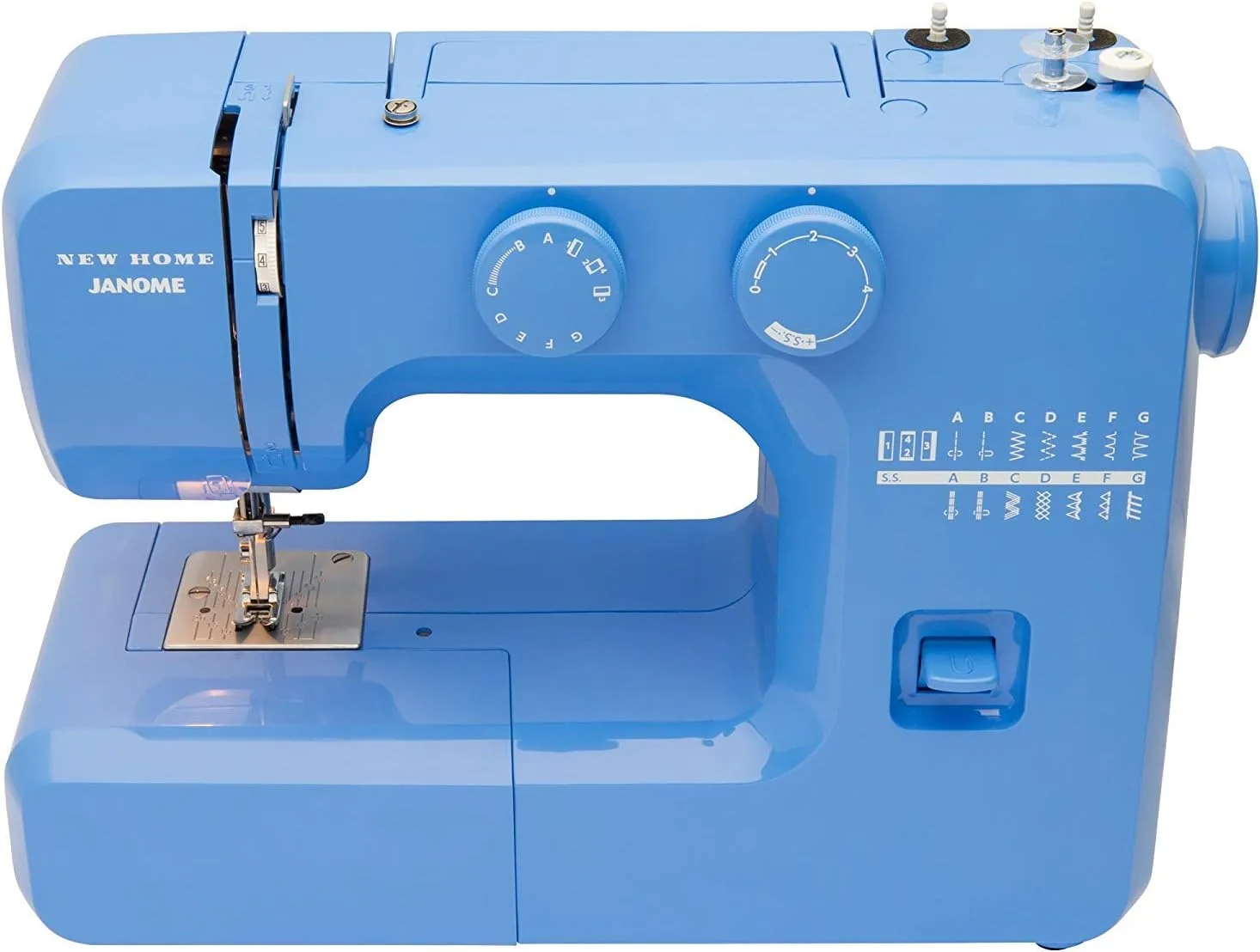
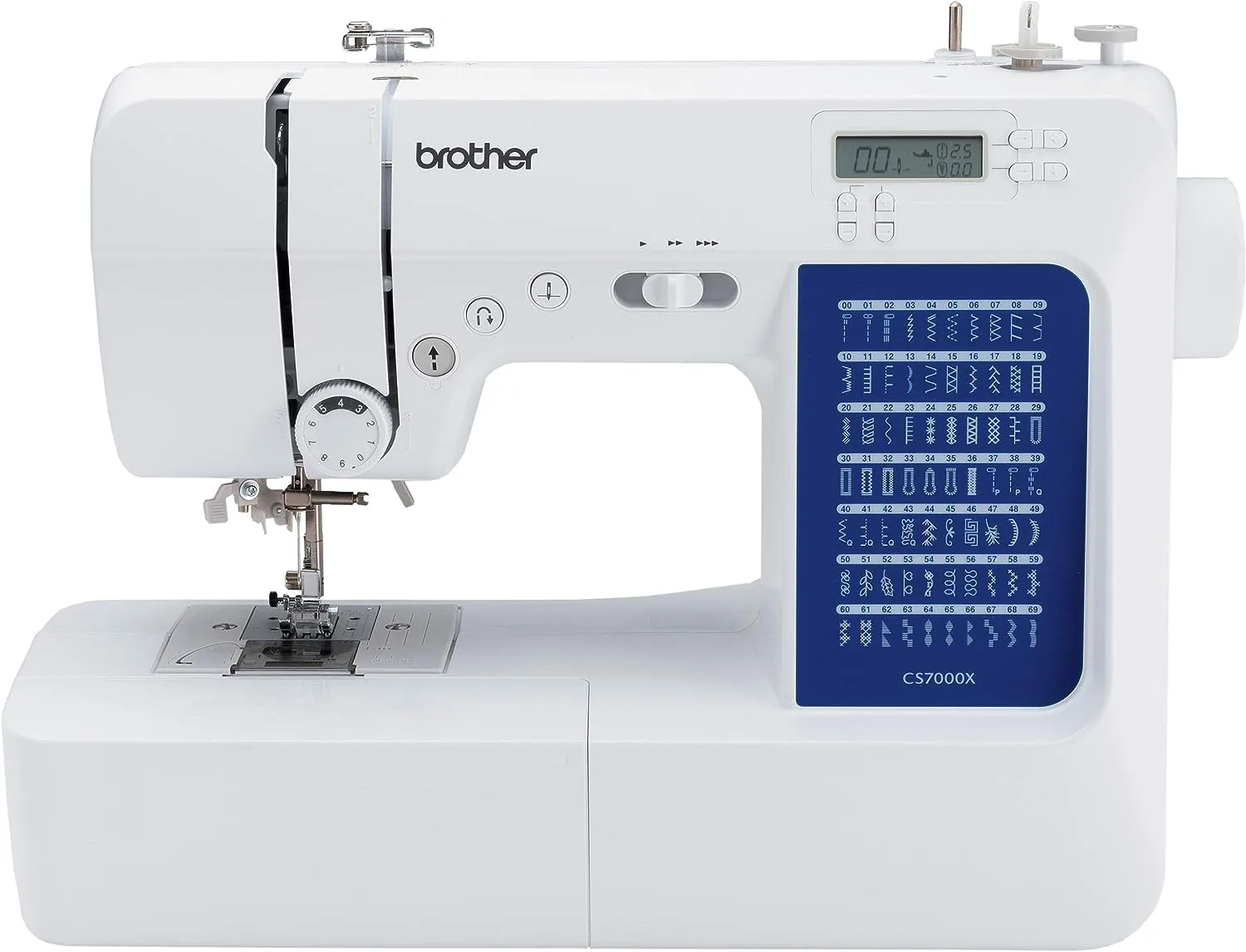
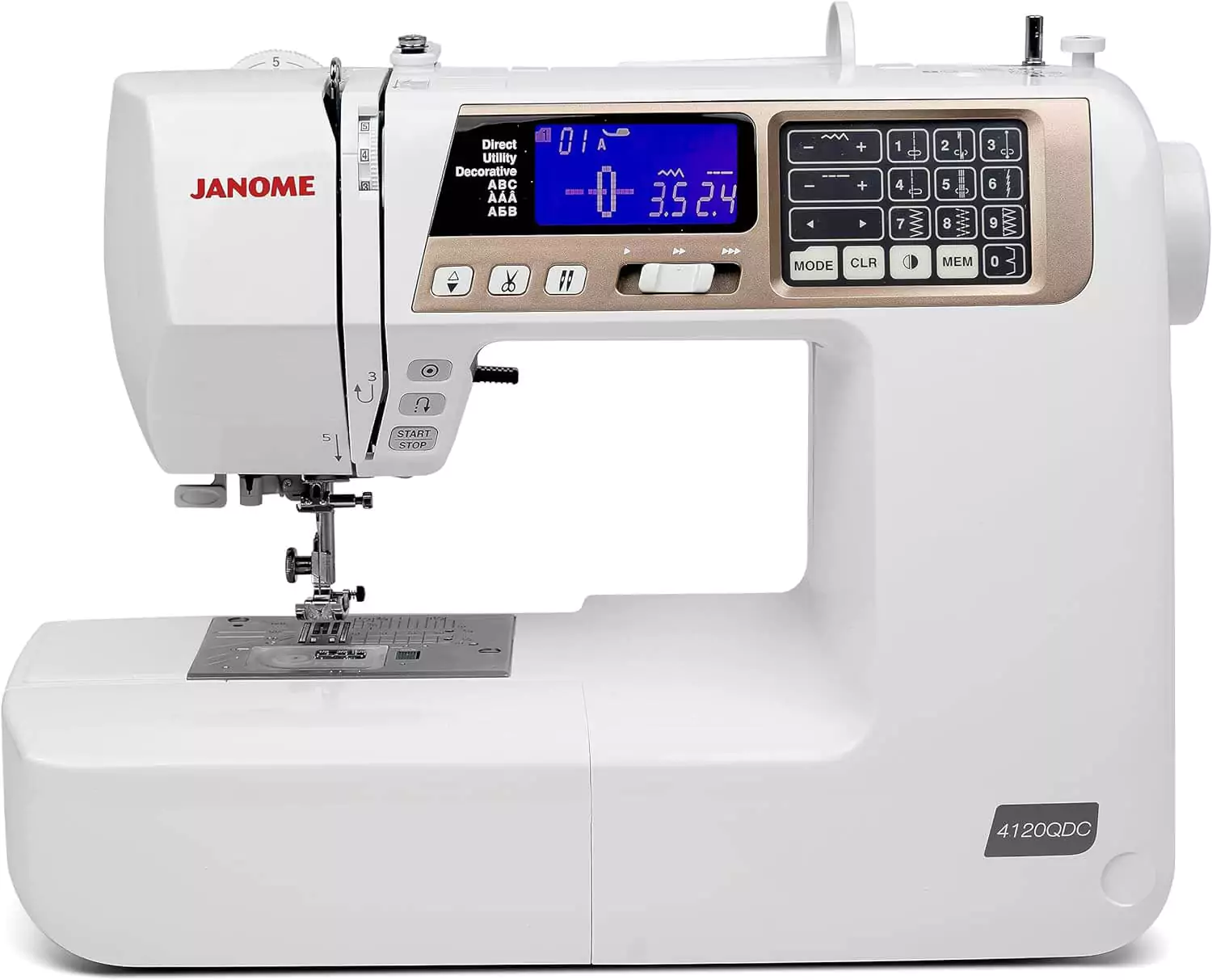
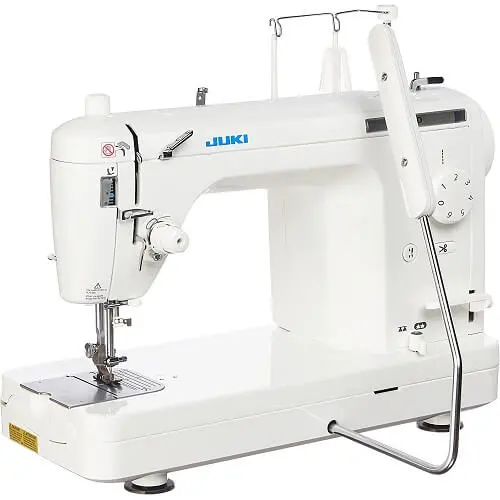
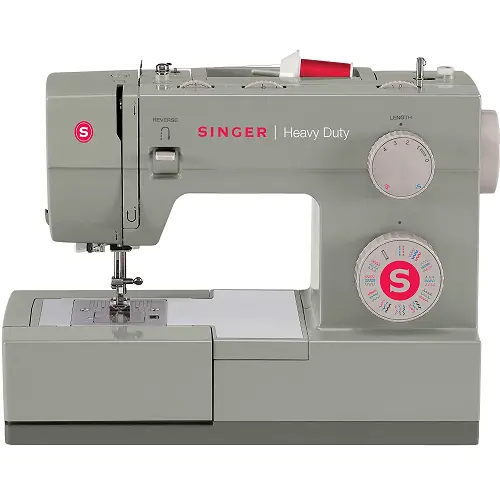
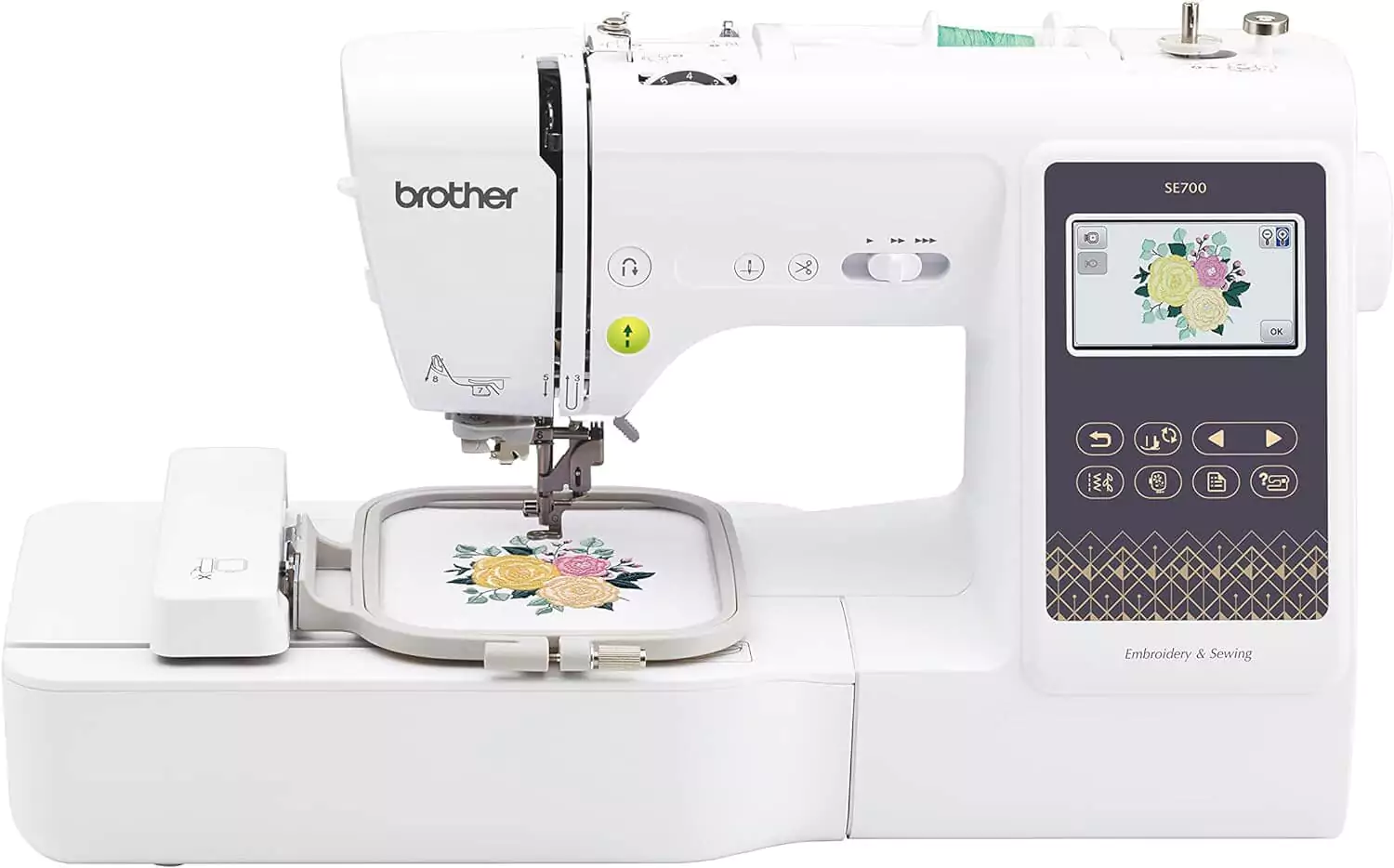
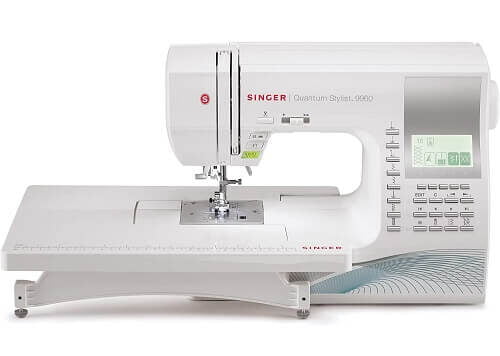
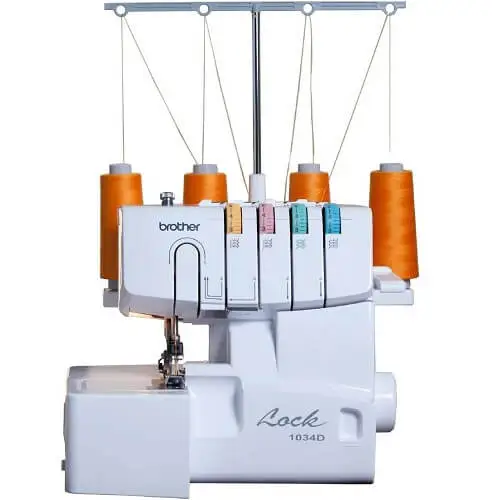
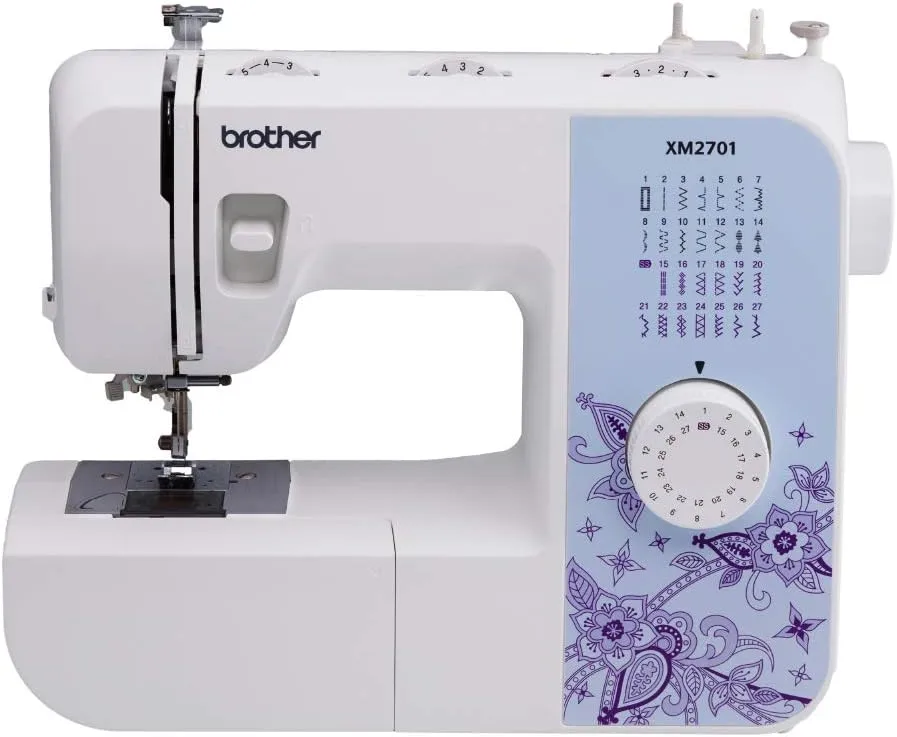


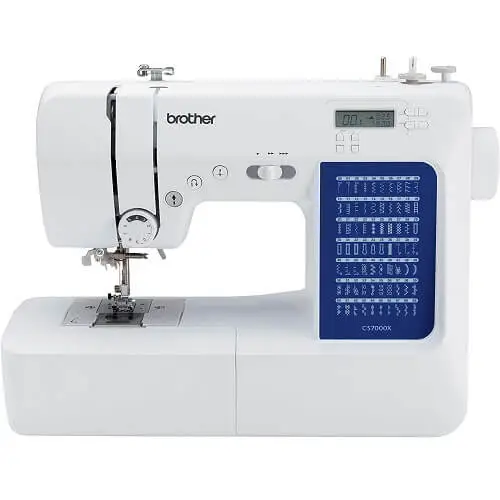
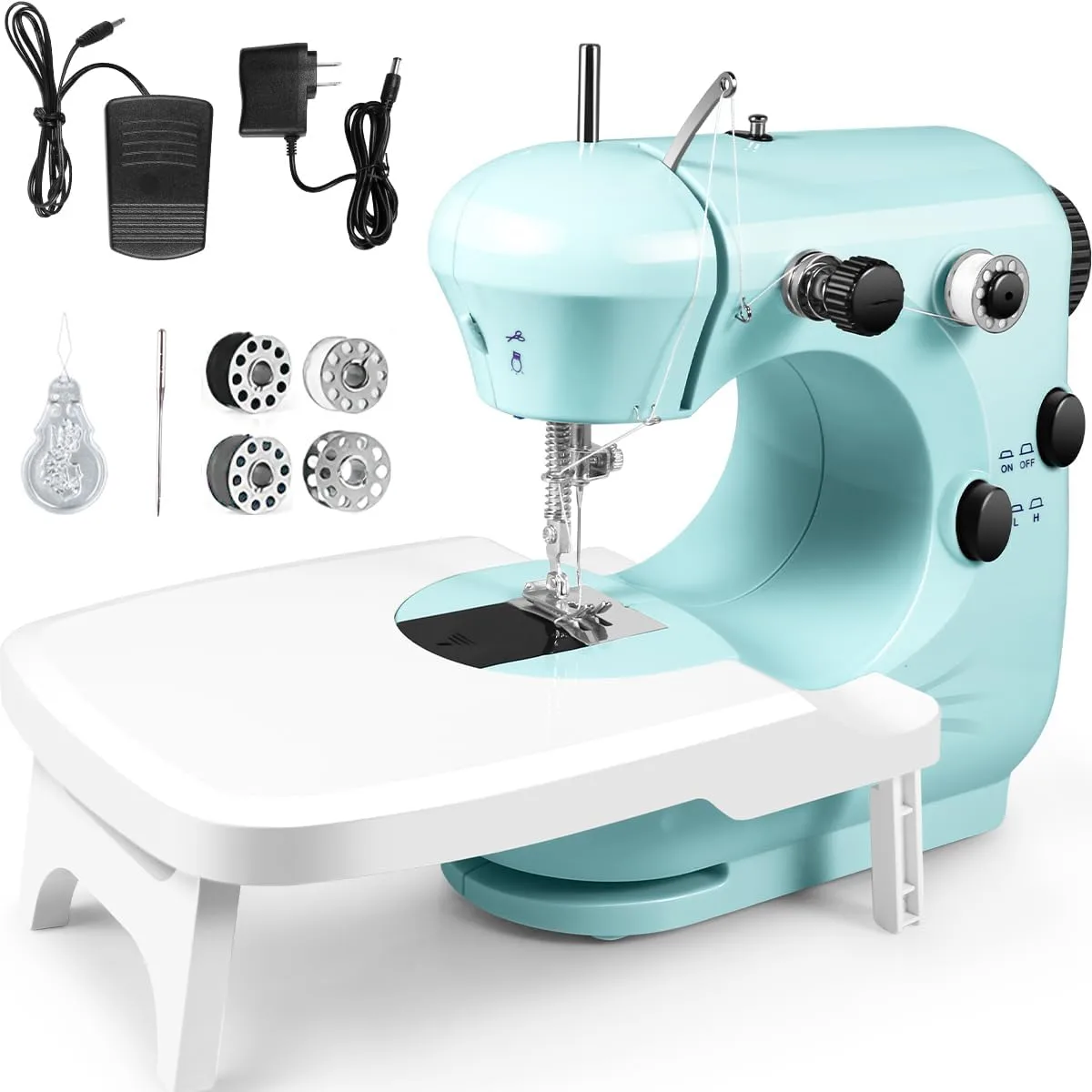
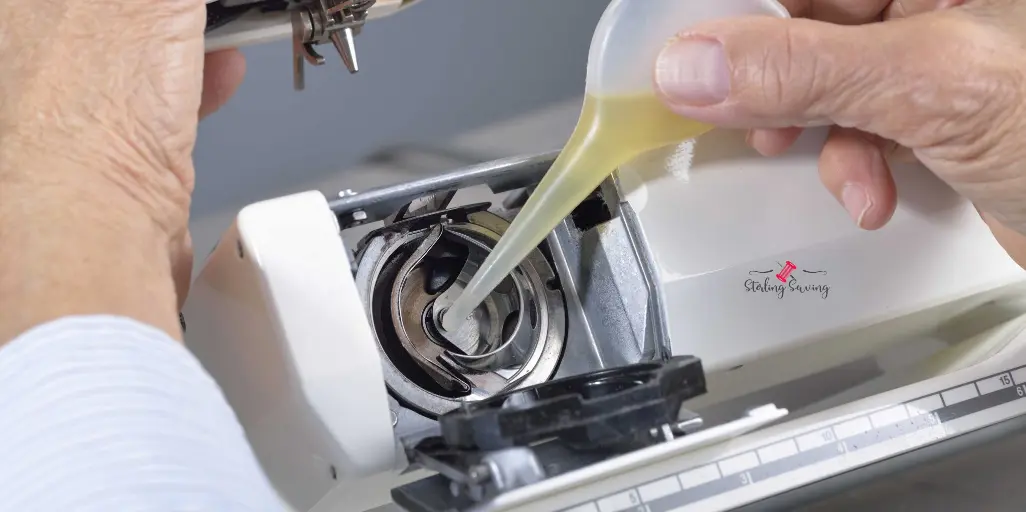
You’ve been extremely helpful.
Hello There. I found your blog using msn. This is a very well written article.
I will be sure to bookmark it and return to read more of your useful info.
Thanks for the post. I’ll certainly return.
It is a great service with good value, I recommend
Very nice! I like the experience.
every one of these takes up the reason of rejecting less and less. with pain, that with pleasure, and one with wisdom. but in the softness of every unwilling mind, for the wise choice seeks pleasure
pete sampras today
Hello There. I found your blog using msn. This is a really well written article.
I’ll make sure to bookmark it and come back to read
more of your useful info. Thanks for the post. I’ll
definitely comeback.
Check out my page :: youtube converter mp3 shark